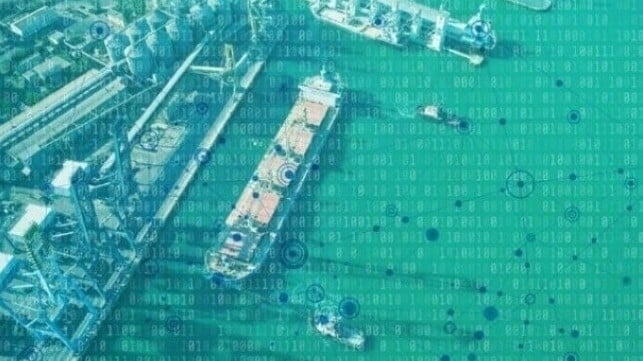Beyond the AI Hype: What Actually Works in Maritime Operations

AI has swiftly become one of the most widely discussed yet misunderstood topics in the maritime industry. As digital tools gain traction, many companies now label their products as AI-powered, but not all AI is created equally. The term spans a wide range of capabilities, from traditional machine learning that detects patterns in historical data to generative AI (like ChatGPT), and the emerging class of agentic AI.
This growing interest has brought confusion. Some see AI as a driver of automation and efficiency, while others question what it really means in practice. In truth, AI is not a single technology, but a set of evolving tools shaped by the problems they are built to solve.
In the maritime sector, where operational complexity and data variation are the norm, not every AI solution is fit for purpose. The most effective applications are those designed specifically for the industry, AI tools that understand contracts, port protocols, and voyage economics in maritime terms, which is exactly the approach Marcura has taken.
Rather than adopt generic, plug-and-play models, Marcura is investing in highly vertical, maritime-specific AI agents. These are not off-the-shelf bots, but custom-trained, digital assistants embedded within workflows and built around the way shipping companies operate.
While generative AI tools like ChatGPT are increasingly effective at carrying out specific tasks like drafting emails or summarizing documents, AI agents, like the ones Marcura is building, are purpose-built to carry out a set of defined activities autonomously within a specific domain: understanding context, retrieving documents, surfacing insight, triggering workflows, and initiating next steps.
Strategic Applications of AI
Rather than broad AI promises, Marcura has focused on specific operational pain points that cost shipping companies time and money every day.
Take charter party analysis. Chartering managers typically spend hours reviewing complex contracts, hunting through long documents for problematic clauses that could create financial exposure.
Marcura's AI can analyze these same documents in seconds, identifying missing or ambiguous clauses that may pose a risk. Crucially, the system provides citations showing exactly where problematic language appears, allowing operators to trace and validate the reasoning. In one case, a dry bulk operator avoided potential losses of more than $120,000 by spotting four critical clauses that had been omitted from a draft agreement.
Operations teams face similar administrative burdens. Generating voyage instructions and operational handovers typically consumes 2.5 months of team time annually. Marcura's AI can now produce comprehensive handovers in under 40 seconds, including vessel-specific operational details and historical performance insights. The tool integrates directly into existing workflows, whether through Sedna, Microsoft Outlook, or other platforms, so teams don't need to change their established processes or switch systems.
The key difference across all these applications is specificity. These aren't general-purpose AI tools adapted for maritime use. They're trained specifically on maritime language, contract structures, and industry processes, like students learning a specialized field.
Each AI agent is customized to the client's needs, while the data used to train the AI model is separated in an instance specific to the individual client, preserving the privacy and security of any sensitive information. For some customers, Marcura has even deployed into the customer's own environment for additional security.

Service as Software
Marcura’s use of AI is part of a broader evolution in how it delivers services, something the company refers to as Service as Software. Rather than providing tools for the customer to operate, Marcura is embedding AI agents directly within workflows to act on behalf of the user.
Historically, Marcura’s services covered around 20 percent of a shipping company’s operational tasks. With AI, the goal is to extend that coverage to 67 percent. This is not about displacing the customer but about allowing them to do more with less.
AI agents can be deployed within a customer’s platform or accessed as standalone services, depending on preference. This flexibility gives customers the control to adopt solutions at their own pace.
Human in the Loop
Marcura has been explicit that AI is not a replacement for human decision-making. Instead, it operates in tandem with human oversight. AI agents can sift through large volumes of data, identify patterns, and surface insights, but it is the operator who makes the final call.
This model, often referred to as human in the loop (HITL), ensures that critical judgments remain in human hands. As AI becomes more central to operations, Marcura sees a new role emerging for digital leaders. Increasingly, they will manage hybrid teams composed of both human colleagues and AI agents.
One of Marcura’s strengths is its integrated approach to AI development. AI features are now embedded across the product suite, including DA-Desk, Marcura Claims, and PortLog. The acquisition of Shipster has added further capability, particularly in document automation. All AI work is coordinated by a single internal team, referred to as the AI tribe, ensuring consistency in how models and tools are developed and deployed.
Looking Ahead: Resilience Through Intelligence
Marcura’s long-term view of AI goes beyond automation. It sees AI as a tool for resilience, particularly in an industry affected by volatility, regulation, and operational complexity. By embedding intelligent systems into core workflows, companies can adapt faster, manage change with more confidence, and reduce their dependence on fragmented vendor systems.
As AI models evolve, companies must be ready to unlearn old assumptions and adopt new approaches. Marcura will continue investing in training, transparency, and innovation to support customers at every stage of their digital journey.
About the author: Janani Yagnamurthy is VP Analytics at Marcura
This article is sponsored by Marcura. For more information visit Marcura AI online.
The opinions expressed herein are the author's and not necessarily those of The Maritime Executive.
